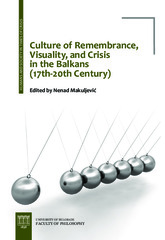Приказ основних података о документу
The 1667 Earthquake in the Bay of Kotor: A History of Resilience
Земљотрес у Боки Которској 1667. године: историја отпорности
| dc.contributor | Makuljević, Nenad | |
| dc.creator | Ulčar, Milena | |
| dc.date.accessioned | 2023-05-08T21:54:02Z | |
| dc.date.available | 2023-05-08T21:54:02Z | |
| dc.date.issued | 2021 | |
| dc.identifier.isbn | 978-86-6427-191-2 | |
| dc.identifier.uri | http://reff.f.bg.ac.rs/handle/123456789/4418 | |
| dc.description.abstract | When it comes to writing the (art) history of a crisis, anonymous and undocumented acts of reparation and reshaping of visual culture could often be analyzed as equally important documents as those that belong to the sphere of art production. During the 1667 earthquake in Kotor, dozens of silver body-part reliquaries were severely damaged. Those objects were “healed” with uneven patches of material, often crudely nailed to the injured surface, usually by the application of the silver votive plaques. At the same time, a great number of ex-votos in the Bay represented images of injured human limbs, cured by the grace of various holy persons. By interpreting a rather eloquent interaction between the two kinds of silver artifacts and by slightly widening the methodological scope of art history, the lack of visual evidence on the 17th-century earthquake in Kotor can be overcome. | sr |
| dc.description.abstract | Када је реч о писању историје кризе једног доба често је анонимно и недокументовано деловање појединаца у процесима обнављања и преобличавања једнако важан извор информација као и анализа уметничке продукције. Током земљотреса 1667. године у Котору, десетине сребрних реликвијара у облику делова тела било је оштећено. Ови предмети су, потом, бивали „излечени“ апликацијом неравних и грубо исечених комада сребра, најчешће коришћењем сребрних заветних плочица. У исто то време, велики број вотивних дарова у црквама Боке Которске садржи визуелни приказ повређених удова људског тела, излечених милошћу различитих светих личности, приказаних на њиховим површинама. Интерпретацијом визуелне размене између ове две врсте сребрних артефаката, као и проширењем методолошког оквира историје уметности, недостатак визуелног материјала о земљотресу из 17. века може бити успешно превазиђен. | sr |
| dc.language.iso | en | sr |
| dc.publisher | Faculty of Philosophy, University of Belgrade | sr |
| dc.relation | Project "Humans and Society in Times of Crisis" financed by the Faculty of Philosophy of the University of Belgrade | sr |
| dc.rights | openAccess | sr |
| dc.source | Culture of Remembrance, Visuality, and Crisis in the Balkans (17th-20th Century) | sr |
| dc.subject | earthquake | sr |
| dc.subject | early modern body | sr |
| dc.subject | reliquaries | sr |
| dc.subject | ex voto | sr |
| dc.subject | zemljotres | sr |
| dc.subject | rano moderno telo | sr |
| dc.subject | relikvijari | sr |
| dc.subject | zavetni darovi | sr |
| dc.title | The 1667 Earthquake in the Bay of Kotor: A History of Resilience | sr |
| dc.title | Земљотрес у Боки Которској 1667. године: историја отпорности | sr |
| dc.type | bookPart | sr |
| dc.rights.license | ARR | sr |
| dc.rights.holder | Faculty of Philosophy, University of Belgrade | sr |
| dc.citation.epage | 49 | |
| dc.citation.rank | M45 | |
| dc.citation.spage | 31 | |
| dc.identifier.fulltext | http://reff.f.bg.ac.rs/bitstream/id/10812/Zemljotresi.pdf | |
| dc.identifier.rcub | https://hdl.handle.net/21.15107/rcub_reff_4418 | |
| dc.type.version | publishedVersion | sr |

